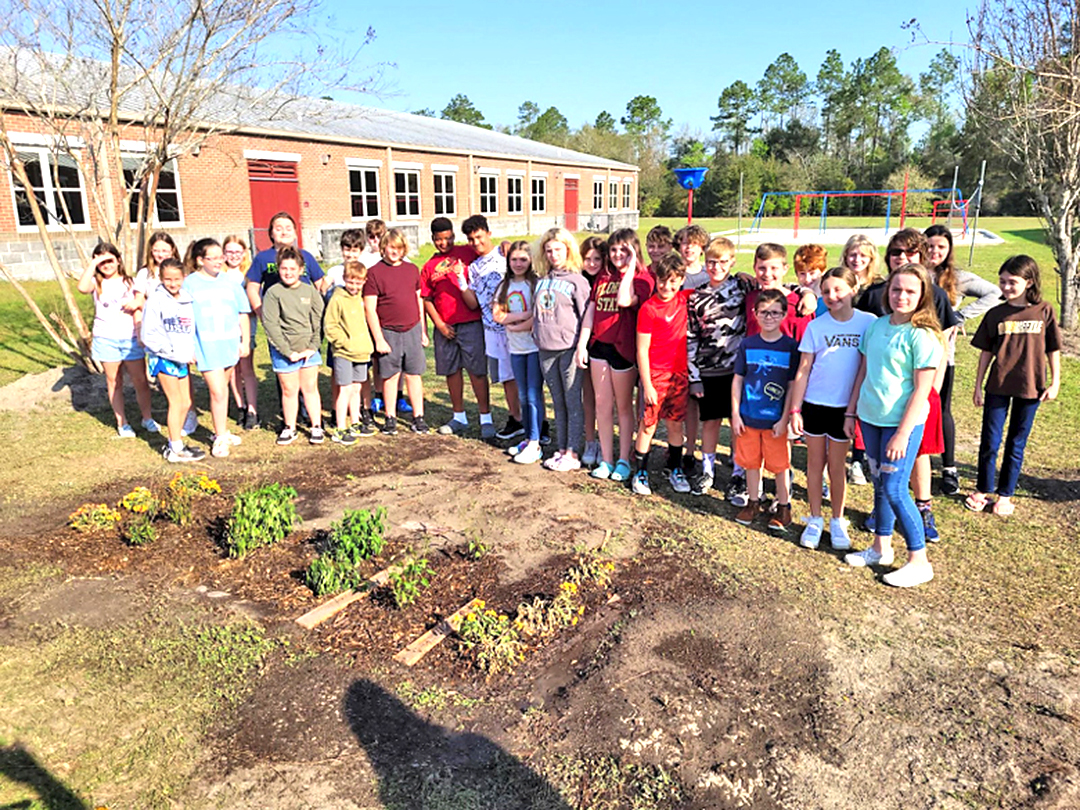SCHOOL NEWS
CLASS AT RIVERSINK AIMS TO HELP MONARCH BUTTERFLIES

Mrs. Johnson’s fifth grade class at Riversink with plants for monarchs to feed on.
Special to The Sun
Mrs. Johnson’s fifth grade classes at Riversink Elementary School have been learning about different ways to help the monarch butterfly in our area.
The monarch butterfly is an endangered species, and its migration is seen in the local area. Learning about the phenomenon of the monarch butterfly’s migration was also an opportunity for the students to develop environmental awareness.
Through the support of the National Science Foundation Career Grant #2142908 and professor Dr. Amal Ibourk from FSU, the students were able to participate in lessons that taught them about how monarch migration is affected by the rising global temperatures over time, which have led to habitat loss for the monarch butterflies such as the decrease in the amounts of Milkweed and Salt Bush along our Florida Coastline.
Fifth grade students used the web-based inquiry science environment (WISE) developed at the University of California - Berkeley (with support from NSF) as a supplement to understand how solar radiation from the sun heats the Earth, and how greenhouse gasses like carbon dioxide and methane can impact the energy cycle when they trap more heat in the atmosphere.
By the end of the unit, fifth graders were able to identify ways that humans can positively impact their environment such as reducing food waste, decreasing energy usage, and planting plants to help native species.
Penelope Watters, a student in Mrs. Johnson’s class stated, “The unit was so interesting! I loved getting to learn so many new things about butterflies and how to help their numbers go up! I hope we can put this knowledge to good use.”
Natalie Drye added, “The most enjoyable thing about the butterfly unit was learning about how they migrate to Mexico and about how they reproduce.”
As a culminating project, the FSU Environmental Service Program, Mrs. Johnson, Dr. Amal Ibourk, and Syrena Young (Dr. Ibourk’s research student) came to school on a Saturday morning and built a community garden at the school. The garden includes flowering plants for butterflies to get nectar, such as zinnias, milkweed for monarch larva to feed on, and blue porter weeds which promote pollinators such as monarchs.
The students are very excited to be making a positive impact and are watering the garden every day during recess. They are helping the monarch population thrive by providing a habitat right at the elementary school. This allows students to see themselves as doing science in ways that make a difference in their school. It also has given them a new connection to the monarch, an appreciation and concern for the natural world but also a feeling of hope and interconnectedness with the world around them.
